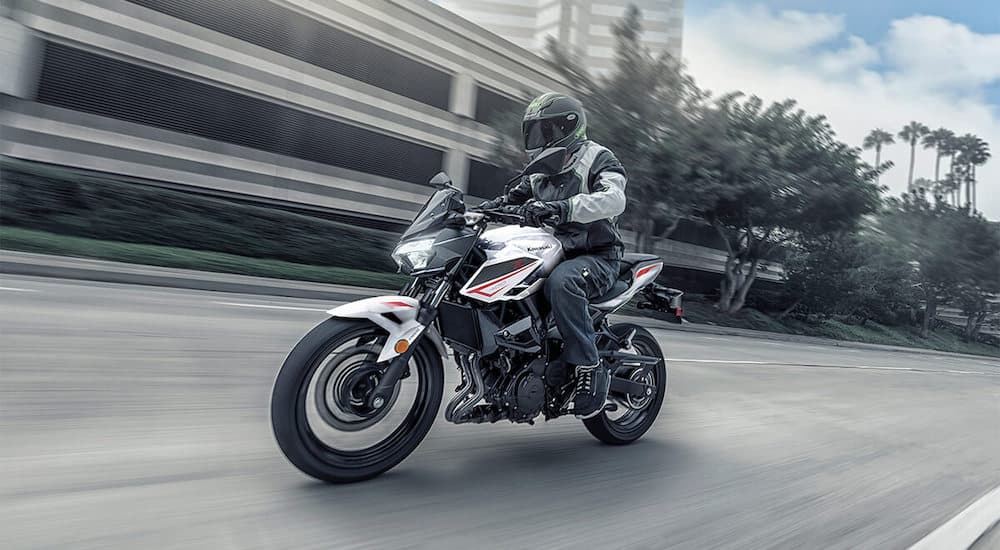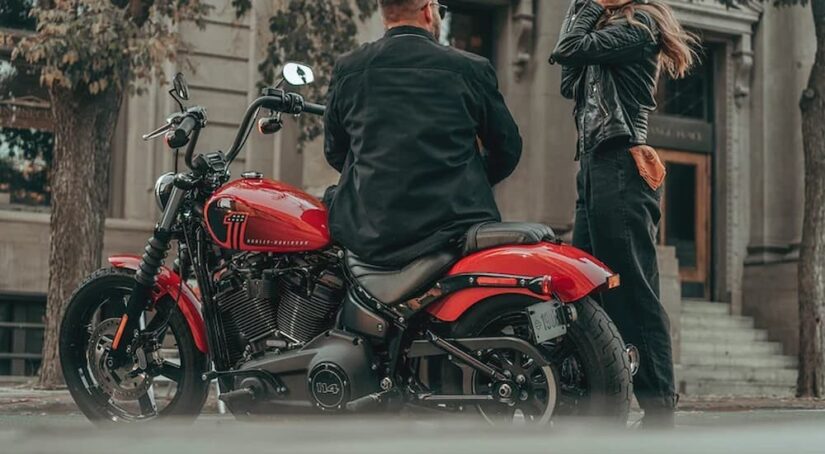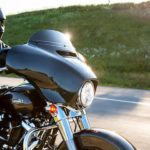If you’re in the market for a new motorcycle, there is no shortage of options to choose from. The category includes everything from low-slung cruisers and custom choppers to touring bikes, adventure bikes, and mopeds, with each offering a unique riding experience all its own. If you’re looking for a slightly more thrilling experience, sport bikes provide an ideal blend of performance, agility, and power. Lighter than your average motorcycle and built with top speed and side-to-side maneuverability in mind, sport bikes allow riders to carve their way through steep curves, weave around other vehicles, and perform head-turning stunts.
However, more riders are turning away from traditional sport bikes in favor of naked bikes. These unfaired models often share their engines, chassis, and other features with sport bikes but are designed to be more comfortable in everyday riding. Ultimately, sport bikes are designed to excel on the track, and while it might be tempting to saddle up to an exact replica of what the pros use, it’s not always the best choice for every rider. This issue isn’t unique to the world of motorcycle racing. As anyone who has ever taken a few chops with a Louisville Slugger can tell you, it’s not always the most comfortable or enjoyable experience.
Professional vs Practical
A traditional baseball bat can be difficult to wield; it’s prone to stinging the hands when you make contact, and its wooden composition can make it difficult to generate power without spending hours at the weight bench. While amateur-level players might like to dress like their favorite pros, the cosplay usually ends just short of the bat as they opt to use metal or composite options in place of the wooden original. These modern bats hold a number of advantages over their wooden forerunners: they’re more durable and user-friendly, making it easier for non-professionals to get a taste of life in MLB.
The same goes for the world of motorcycles. Sure, you can challenge yourself by picking a less comfortable sport bike with a steeper learning curve. But if you’re looking for a casual weekend rider, you’re really just making everything more difficult for yourself. In addition to being easier to ride, naked bikes are typically more affordable than sport bikes while still offering an engaging experience that’ll keep your adrenaline pumping. It all comes down to just how much you are willing to sacrifice in the pursuit of raw performance. Join us as we explore some of the key differences between the two types of motorcycles and see which one might be right for you.
Fairings
The most obvious difference between sport bikes and naked bikes comes down to the fairings. These aerodynamic shells, usually made of hard plastic, fiberglass, or carbon fiber, are a common feature on sport bikes, and the lack of fairings is what makes a naked bike “naked” by definition. In the world of motorcycle racing, fairings play an important role in giving riders a competitive edge. Their primary role is to reduce drag by deflecting air away from the motorcycle and rider. This is especially important at higher speeds where the air pushing against the bike can mean the difference between earning the checkered flag and coming up just short.
However, while extreme aerodynamics might be good when you’re in the middle of a race, it can have some drawbacks on a street bike. First off, fairings cost money and contribute to the higher cost of a sport bike. They are also relatively fragile and susceptible to damage, even from minor drops. In fact, many early naked bikes were simply sport bikes that had their fairings removed when they were damaged. The attention to aerodynamics also means that sport bikes often position the rider in a way designed to make full use of the fairings with little regard to rider comfort.
Egonomics
Sport bikes are designed to improve a bike’s aerodynamic properties at all costs, and that cost usually tends to come in the form of comfort. Sport bikes tend to put riders in a more aggressive, hunched-over stance in an effort to reduce drag. This is accomplished by moving the bike’s foot controls further back on the chassis and lowering the position of the clip-on handlebars on the sides of the fork. These changes basically have the rider laying flat on top of their bike, which while ideal from an aerodynamic perspective, is not a recipe for long-term comfort. Sport bike riders tend to cite wrist fatigue as one of the biggest drawbacks of the style, especially when it comes to rough, bumpy roads.
Naked bikes put ergonomics at the forefront, creating a comfortable ride by placing the rider in a more upright riding position. Foot controls are moved towards the center of the bike, which makes for a more comfortable riding position while also allowing riders to absorb some shocks with their legs. The handlebars are also elevated, which goes a long way in taking some pressure off the wrists. These changes not only improve comfort but also allow for a better––and safer––view of the road thanks to the rider’s upright position.

Performance
Finally, we come to one of the biggest differences between sport bikes and their naked counterparts: performance. Sport bikes are designed for life on the track and have been engineered to prioritize pure speed and acceleration above all else. While it’s not uncommon for sport bikes to share the same engines as their naked counterparts, there is usually a significant difference in how the motors are tuned.
A sport bike is usually mapped for performance, only coming alive at the top end of its powerband. Compare this to naked bikes, which tend to have plenty of mid-range torque that’s more useful in the type of real-world road conditions you’ll face off the track, and you’ll begin to understand the difference. Naked bikes might not be able to match the performance of a sport bike on the track, but they’re a lot more practical for everyday driving.
That’s not to say naked bikes are underpowered by any means. The lack of fairings and other add-ons means that naked bikes can even have a better power-to-weight ratio than sportier options. In addition to improving their acceleration, this also means that naked bikes can be more easily controlled as there’s less weight to move around. This lighter design is perfect for newer riders, who might still be building the confidence and skill needed to really lean into turns and keep the bike aimed in the right direction. Experienced motorcyclists will appreciate the raw power that only a sport bike can provide, but they can easily overwhelm fledgling riders.
What Makes Sense for Your Ride?
Sport bikes and naked bikes might be very closely related in terms of design, but they offer two very different riding experiences. From style and comfort to performance, price, and efficiency, sport bikes and naked bikes differ in some important ways. In the end, it’s all a matter of preference, and it all comes down to what you’re looking for in a ride. If you’re eager to test your limits and see what it’s like in the big leagues, by all means, go for a sport bike. On the other hand, if you’re looking for a more well-rounded––and less taxing––riding experience, a naked bike might be just the ticket. Naked bikes are typically more affordable and simply more comfortable than sport bikes, flattening the learning curve and giving every rider the opportunity to experience life on two wheels.



